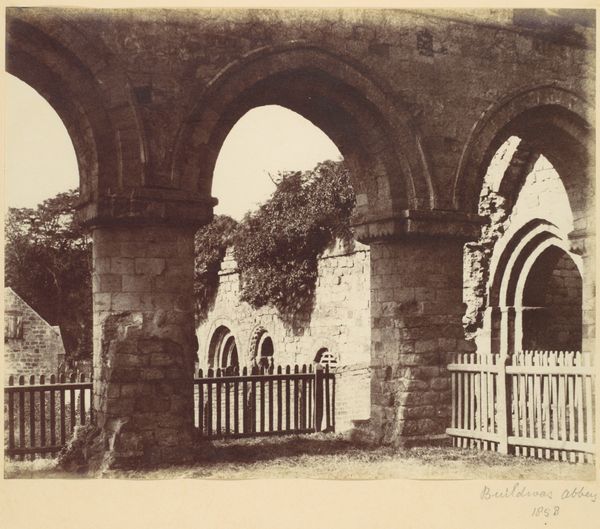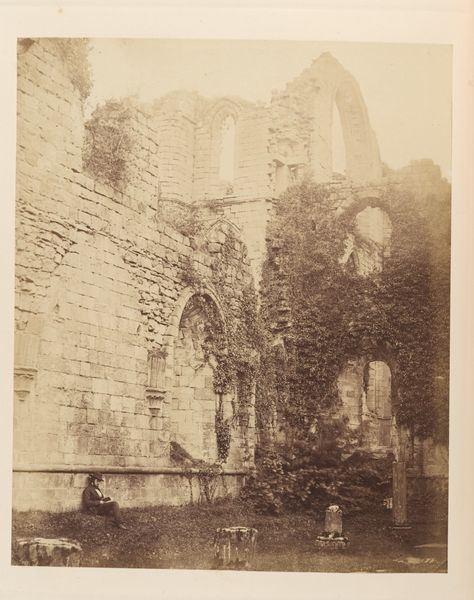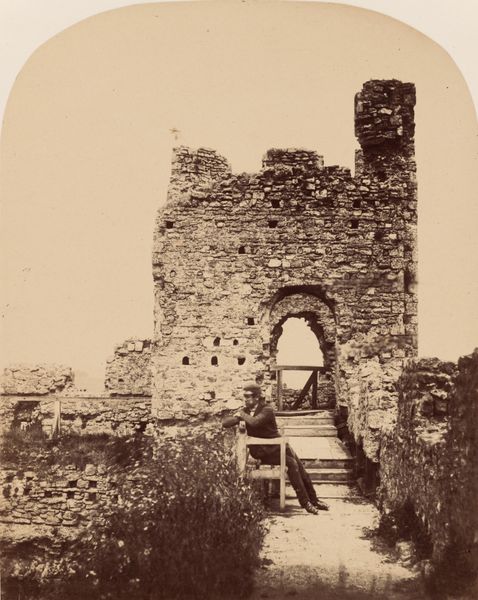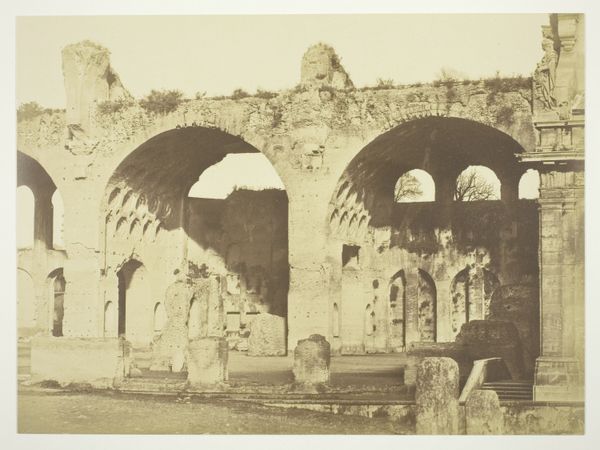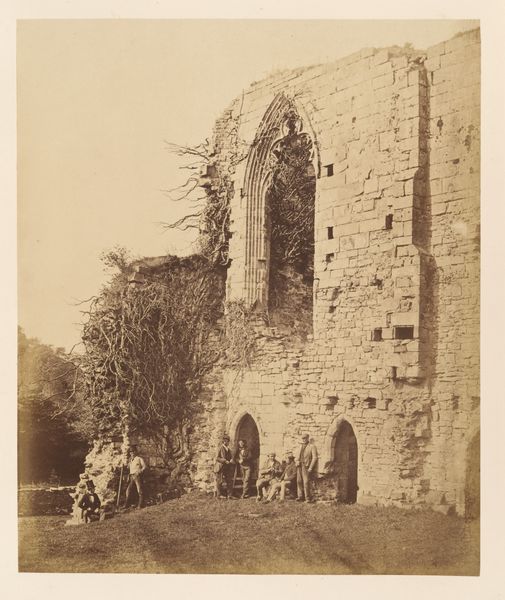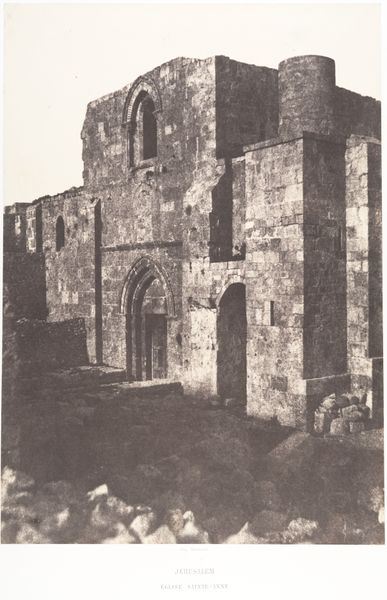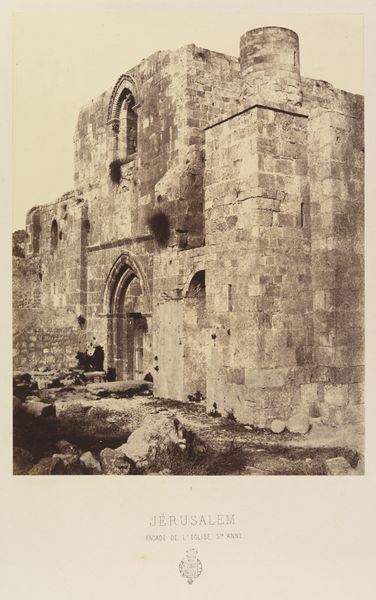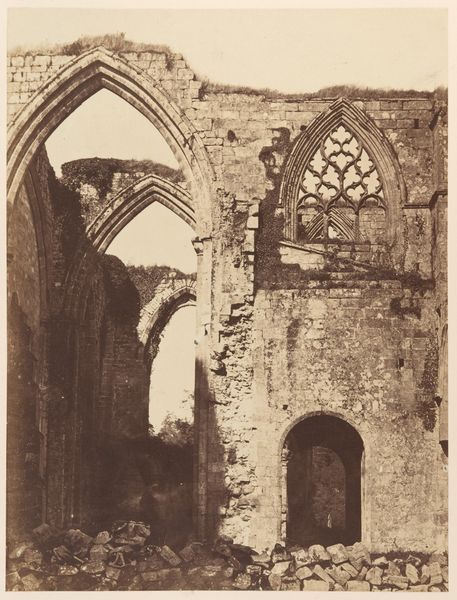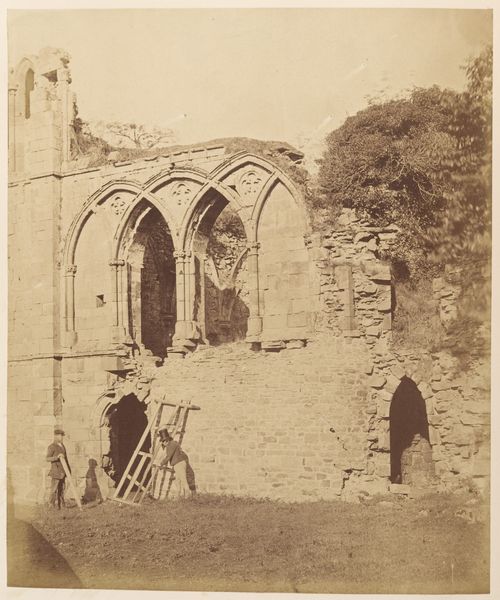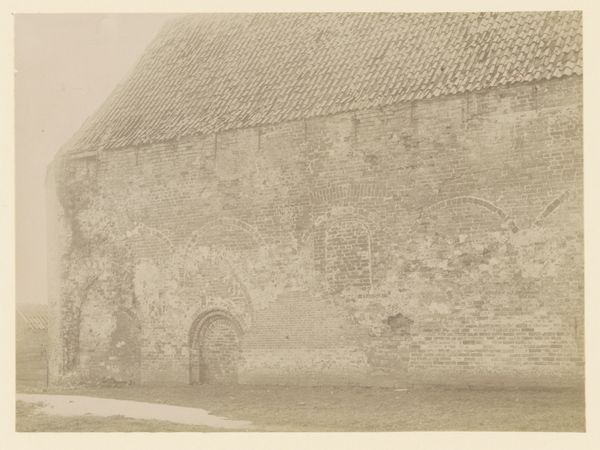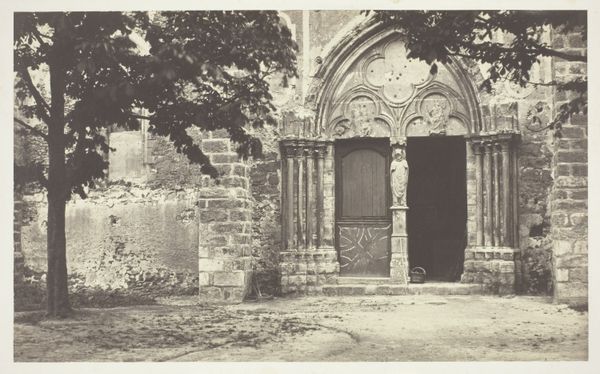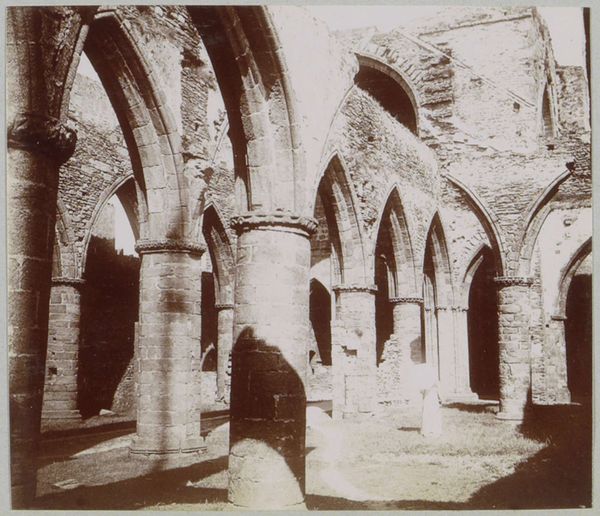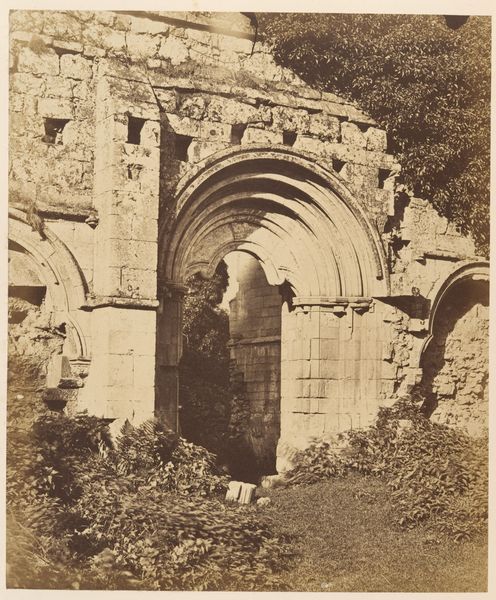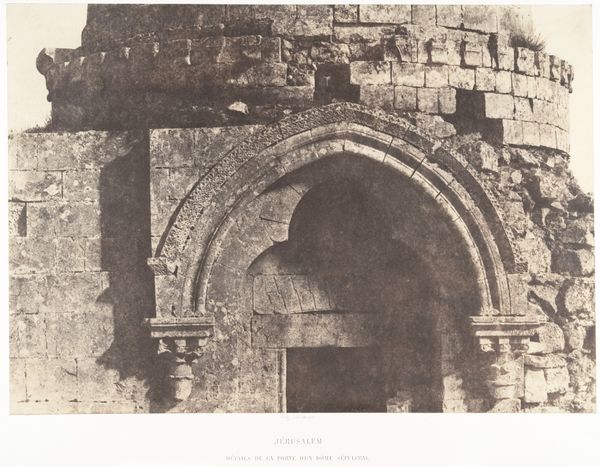
Dimensions: 21.9 x 27.4 cm. (8 5/8 x 10 13/16 in.)
Copyright: Public Domain
Alfred Capel Cure made this photograph of Haughmond Abbey in 1858, using the collodion process. This method involved coating a glass plate with a light-sensitive emulsion, then exposing it in the camera while still wet. It’s a relatively cumbersome, technically demanding process, and although it allowed for multiple prints to be made from a single negative, it was hardly mass production. The resulting print has a distinctive, soft tonality, which almost gives the stone of the abbey a liquid quality. You can see the texture of the paper itself, and imagine the artist in his darkroom, carefully controlling the development. This was still early days for photography, long before it became a truly democratized medium. What Cure has captured, through his labor intensive practice, is the beauty of a structure built by hand. The ruined abbey speaks of time, skill, and the slow accumulation of culture, all caught in a fleeting moment. It reminds us that even in the age of mechanical reproduction, the human touch endures.
Comments
No comments
Be the first to comment and join the conversation on the ultimate creative platform.
